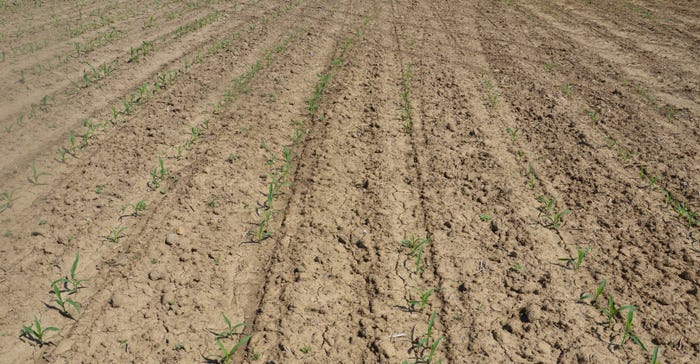
How do you know what’s happening in your cornfields if you don’t go out and look? That’s the basis behind Integrated Pest Management. John Obermeyer, a Purdue University Extension entomologist, encourages people to scout and base treatment decisions for insects, including black cutworm, on economic thresholds instead of just spraying an entire field for the pest.
Black cutworm moths were plentiful in certain parts of Indiana this spring, based on catch reports from cooperators, which include Extension educators, ag business folks and farmers. However, weather and timing matter. If corn wasn’t a certain size when the larvae hatched, the crop may have escaped injury.
Insect injury is just one of many things you may find while scouting corn early in the season. Here are other situations you may encounter:
Uneven plant spacing. Even with all of today’s technology in planting, sometimes if you’re in a hurry and don’t dot every i and cross every t, you can still wind up with plant spacing that isn’t perfect. If plant spacing is too irregular, it can influence yield potential by up to 5%. That’s based on work by Purdue Extension corn specialist Bob Nielsen some three decades ago, before planter manufacturers became more serious about precise seed placement.
Uneven plant emergence. Dave Nanda likes to say a corn plant two stages behind its neighbors is worse than a weed. Nanda is director of genetics for Seed Genetics-Direct. That’s because you can take out a weed with herbicides, but you can’t kill a corn plant. It competes for inputs and produces little to no output. Planting into uneven moisture conditions or crusting can cause uneven emergence.
Missing plants. Unless you take stand counts early in the season, you won’t know if a plant emerged and died due to insect or disease, or never emerged at all. It’s too late at harvest to answer that question. It’s also too late to correct it, but the reason for missing plants could impact decision-making for the next season.
Check out the slideshow to see examples of these problems.
About the Author(s)
You May Also Like




